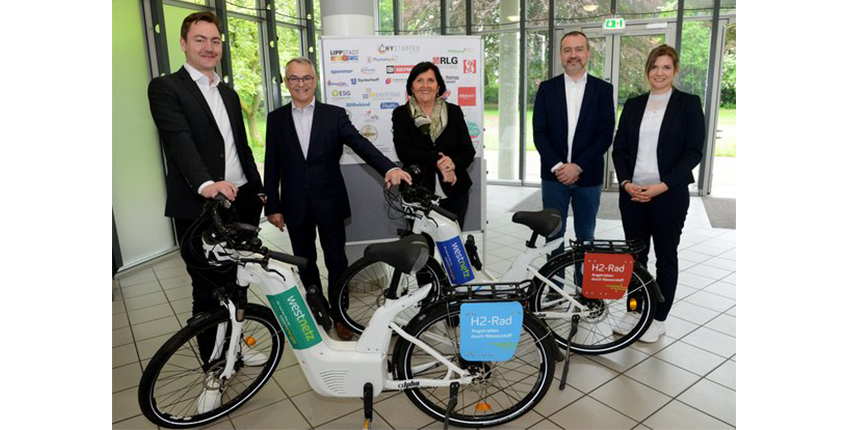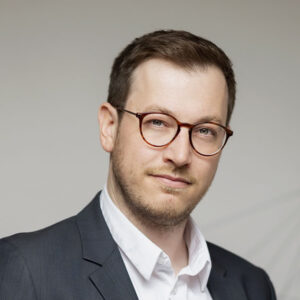The results of the HyStarter project have now been presented to around 100 guests at the Soest town hall. Almost 30 stakeholders participated in the project, culminating in a joint 2030 vision for the ramp-up of the hydrogen economy in the Soest district. Climate-neutral production in industry as well as logistics and transport are at its focus.
The participants see potential in local public transport, in heavy-duty transport and waste logistics, among other sectors. However, the infrastructure must first be expanded, which is why the focus will be on constructing several hydrogen refuelling stations in the region. This conclusion and other findings can be found in the now published concept study. It will act as a guideline for the further development of a hydrogen economy in the district. “As the Soest district, we want to actively support this process”, declared District Administrator Eva Irrgan in her welcoming address at Soest town hall.
With wind turbines visible for miles around, said District Administrator Irrgang, many renewable electricity plants are already in operation in the Soest district: “In this context, hydrogen electrolysis and hydrogen storage show potential in terms of the grid. Along with existing wind energy turbines, more possibilities will be exploited in future. The electricity they generate is to be used for hydrogen electrolysis.”
Under the heading ‘Hydrogen and industry in the rural space’, the Soest district, together with an open group of companies and municipalities had developed initial projects, action pathways and visions for establishing a regional hydrogen economy. “This preliminary work is decisive for climate-neutral production from the year 2045 onwards, as set out by the federal government”, underlined Frank Hockelmann, Climate Protection Manager of the Soest district. “From the beginning, many project ideas germinated from this awareness”.
However, it is also clear that to supply domestic industry with enough hydrogen, there are even bigger hurdles to overcome. The amounts of hydrogen calculated to be produced in the Soest district will not come close to being able to cover demand. The current availability of the electrolysis technology, combined with the availability and the price of green power, poses major challenges to the manufacturing industry with its high level of natural gas demand. This is why a connection to the long-distance, hydrogen transmission network is indispensable. In the future, the Soest district will therefore develop into a hydrogen importing region.
Background: HyStarter
In the HyStarter project, the potential for and limits to the use of hydrogen and fuel cell technology in the Soest district have been discussed since the start of 2022. In six strategy dialogues and two public events, possible fields of application and necessary infrastructural developments were debated and implementation concepts for the district developed. Project participation was initiated by the district’s administration, with the support of wfg Wirtschaftsförderung Kreis Soest. The project was funded by the Federal Ministry for Digital and Transport.
Download HyStarter results report for the Soest district (PDF, in German)
Photo legend:
Hydrogen for the bike – it already exists. For the hydrogen economy in the Soest district, a vision for 2030 was developed in the HyStarter project with additional perspectives, primarily for industry. District Administrator Eva Irrgang (middle), District Climate Protection Manager Frank Hockelmann (2nd from right), Alexander Gehling (Programme Manager Hydrogen and Fuel Cells, NOW GmbH, l.), Dr. Frank Koch (2nd from left) and Ilvy Havranek (both EE ENERGY ENGINEERS GmbH) at the HyStarter closing event. Photo: Birgit Kalle/ Soest District
Source of original release: Soest district


